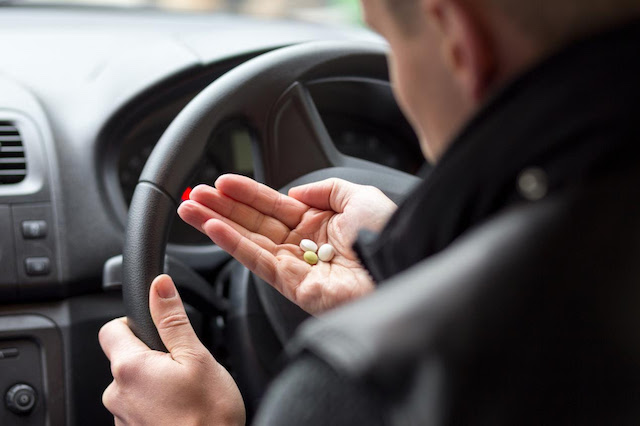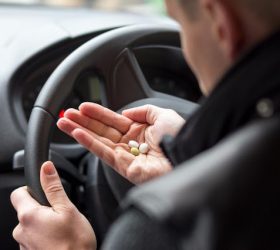A hidden epidemic of drug-driving is at large in Britain, with almost 1-in-3 motorists unwittingly driving with dangerous amounts of drugs in their system, according to the UK’s leading road safety charity, IAM RoadSmart.
 But the drugs in question are not illicit substances, such as cannabis or cocaine, but in fact everyday prescriptions, and over-the-counter medications, including painkillers and antidepressants.
But the drugs in question are not illicit substances, such as cannabis or cocaine, but in fact everyday prescriptions, and over-the-counter medications, including painkillers and antidepressants.
Indeed, a survey of over 2,000 motorists commissioned by the charity has revealed that 30 per cent of drivers do not know what the maximum dose of a prescription medication is before it will impact their driving. Meanwhile, 31 per cent of those surveyed do not know how long they should wait before driving after taking their medication.
Over 1-in-5 (22 per cent) drivers either rarely (14 per cent) or never (8 per cent) check whether their medication will impact their ability to drive, while over 1-in-4 (28 per cent) are unlikely to avoid driving after taking over-the-counter medications, such as antihistamines or cold and flu remedies, that come with a warning not to use heavy equipment or machinery.
Under UK law, it’s an offence to drive or attempt to drive while unfit because of drug use – and driving laws do not distinguish between illegal and prescribed drugs. However, those who have driven while over the specified legal limit may have a medical defence, as long as they have followed the advice of healthcare professionals or are not causing the motorist to be unfit to drive.
Although it’s ultimately the driver’s legal responsibility to inform the DVLA of their fitness to drive, it is also the responsibility of GPs and pharmacists to offer suitable clinical advice to patients regarding the likely risks of prescribed medications.
But IAM RoadSmart is calling for a review of the prescription process, as the charity claims this lack of awareness may have led to an increase of drug-drivers on UK roads. Since the law changed in 2015, cases of driving with a specified controlled drug above a certain limit have increased year-on-year, with convictions reaching 27,962 in 2021.
Potential reforms may include following the example of Australia, where medication packaging is legally required to display a visible warning if a driver could be impaired by the substance, or the French, who have deployed a colour-coded system on medications labels to help make potential risks clearer.
Antony Kildare, CEO at IAM RoadSmart, commented: “When people think of driving while under the influence of drugs, they will probably, quite understandably, think of those who get behind the wheel after taking illicit and recreational substances such as cocaine, cannabis or ecstasy.
“And yet legal drugs that are used for medicinal purposes can often be just as potent, and could profoundly impact a driver’s judgement while behind the wheel. However, under the current system, this threat may not be understood – resulting in a lack of awareness of what should be basic considerations, such as maximum dosages or whether the medication will impact their ability to drive.
“We would like to see a new and reformed system which will provide more transparency on how medications can affect a motorist’s ability to drive, and clearly communicate potential risks to motorists.
“We also want drivers to be more aware of how they feel after taking medication for their own safety, so we are urging drivers to be vigilant of any potential symptoms of taking their medication and consider how the side-effects could impair their driving. This may include drowsiness, light-headedness, shakes and dizziness.”
IAM RoadSmart recently called on the government to take urgent action against Britain’s decade-long drug-drive problem. You can learn more by reading the charity’s campaign statement on this issue.





